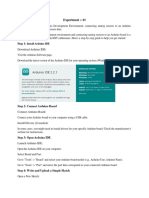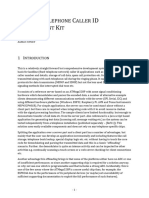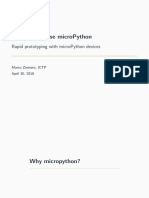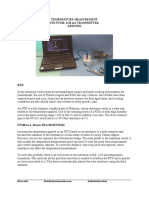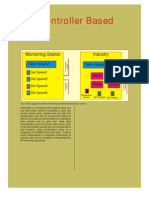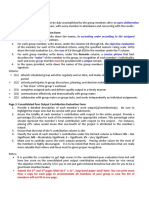0% found this document useful (0 votes)
75 views29 pagesTango Class Arduino Temp Sensor
The document discusses writing a Tango device class to control a temperature sensor connected to an Arduino board. It covers defining the hardware components, creating a basic Tango class using the Pogo code generator, and implementing the class in both Python and C++. Key aspects include defining device states, commands, attributes, initializing and deleting the device, implementing commands to control the hardware, and reading/writing attributes to retrieve sensor measurements.
Uploaded by
oaky2009Copyright
© © All Rights Reserved
We take content rights seriously. If you suspect this is your content, claim it here.
Available Formats
Download as PDF, TXT or read online on Scribd
0% found this document useful (0 votes)
75 views29 pagesTango Class Arduino Temp Sensor
The document discusses writing a Tango device class to control a temperature sensor connected to an Arduino board. It covers defining the hardware components, creating a basic Tango class using the Pogo code generator, and implementing the class in both Python and C++. Key aspects include defining device states, commands, attributes, initializing and deleting the device, implementing commands to control the hardware, and reading/writing attributes to retrieve sensor measurements.
Uploaded by
oaky2009Copyright
© © All Rights Reserved
We take content rights seriously. If you suspect this is your content, claim it here.
Available Formats
Download as PDF, TXT or read online on Scribd
/ 29

